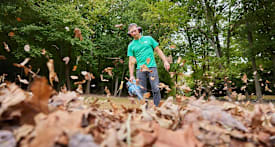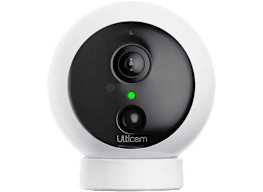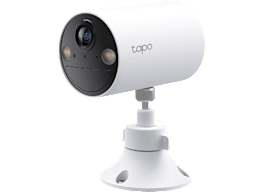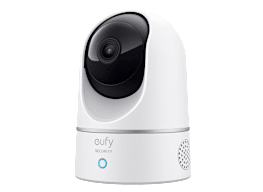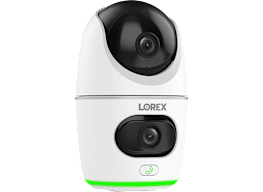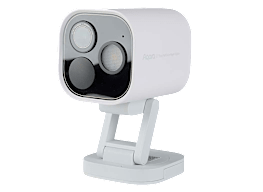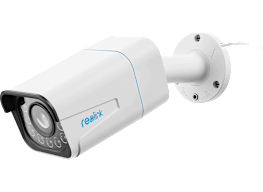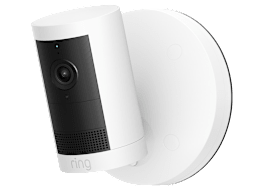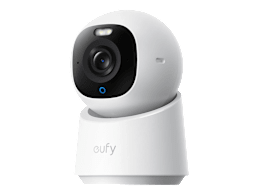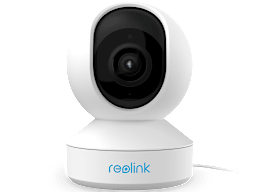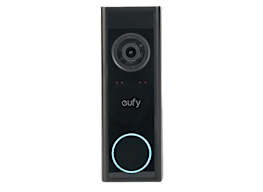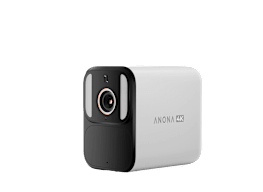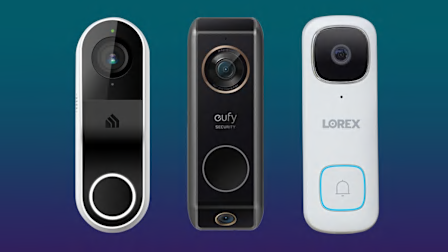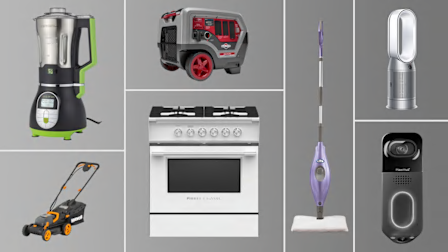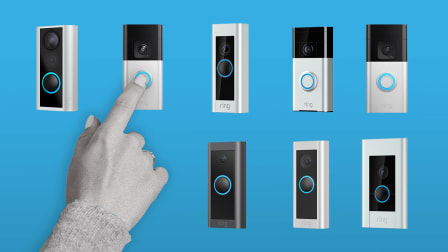Best Video Doorbell Cameras of 2025
Consumer Reports' tests identify the best models to ward off porch pirates and ding-dong ditchers
When you shop through retailer links on our site, we may earn affiliate commissions. 100% of the fees we collect are used to support our nonprofit mission. Learn more.
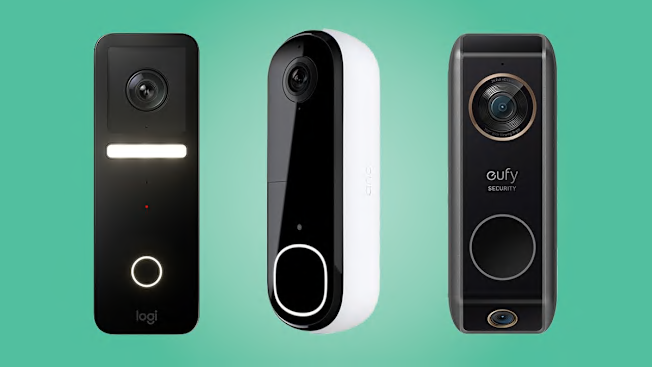
Video doorbells, also known as doorbell cameras, let you remotely chat with visitors and keep an eye on package deliveries from the screen of your smartphone. When these doorbells start recording, they immediately send you an alert—though our tests show some do it much faster than others. Some models now offer a package detection feature. Porch pirates, beware.
Below, we’ve rounded up the best video doorbell cameras from our tests, in alphabetical order. (CR members can click on the name of each model to access full ratings.) You’ll find doorbells here from Arlo, Eufy, Google Nest, Logitech, Lorex, and TP-Link. They all feature night vision, high-definition video, and two-way audio.
5 Best Wireless Video Doorbell Cameras
Here, from our ratings, are the top-performing wireless video doorbells that run off batteries. Many of these doorbells also let you connect them to existing low-voltage doorbell wiring for continuous power. For results on more than 20 wireless video doorbells, go to our complete video doorbell ratings.
Arlo Video Doorbell HD (AVD3001-100NAS)
Free video storage: None.
Optional storage plans: Through an Arlo Secure plan, you can get 30 days of cloud video storage for $8 per month ($80 per year) for one camera or $13 per month ($130 per year) for unlimited cameras; 30-day storage with AI object and sound recognition for $18 per month for unlimited cameras; or all of those features plus the Arlo Safe personal safety app, 24/7 emergency response buttons, and professional monitoring for the Arlo security system for $25 per month. Keep in mind all of these prices increase after the first year of ownership.
The Arlo Video Doorbell HD is one of the newer (and more budget-friendly) doorbells made by the company. In our tests, it receives top marks for data security and response time, as well as a decent score for its data privacy. But it receives unfavorable scores for its video quality and its lack of certain smart features without a subscription. Its features include geofencing (to turn alerts on or off when you leave or return home), motion alert schedules, high dynamic range video, and voice/app control via Amazon Alexa and Google Home/Assistant. With an Arlo Secure subscription, this doorbell also gains cloud video storage and, depending on the plan, certain features like activity zones or smart alerts for people, packages, animals, and vehicles.
This doorbell has a rechargeable battery, but you can also hardwire it to a home’s doorbell wiring for continuous power and have it ring a home’s existing doorbell chime. A wireless, plug-in chime is also available separately for $50.
Arlo Video Doorbell 2K (AVD4001-100NAS)
Free video storage: None.
Optional storage plans: Through an Arlo Secure plan, you can get 30 days of cloud video storage for $8 per month ($80 per year) for one camera or $13 per month ($130 per year) for unlimited cameras; 30-day storage with AI object and sound recognition for $18 per month for unlimited cameras; or all of those features plus the Arlo Safe personal safety app, 24/7 emergency response buttons, and professional monitoring for the Arlo security system for $25 per month. Keep in mind all of these prices increase after the first year of ownership.
The Arlo Video Doorbell 2K is one of the company’s newer doorbells. In our tests, it receives top marks for data security and response time, as well as a strong score for video quality. Its two weak spots are its lackluster data privacy and lack of certain smart features without a subscription. Its features include geofencing (to turn alerts on or off when you leave or return home), motion alert schedules, and voice/app control via Amazon Alexa and Google Home/Assistant. With an Arlo Secure subscription, this doorbell also gains cloud video storage and, depending on the plan, certain features like activity zones or smart alerts for people, packages, animals, and vehicles.
This Arlo doorbell has a rechargeable battery, but you can also hardwire it to a home’s doorbell wiring for continuous power and have it ring a home’s existing doorbell chime. A wireless, plug-in chime is also available separately for $50.
Eufy Video Doorbell E340
Free video storage: Yes, using 8 gigabytes of built-in memory. (Eufy estimates it will store up to 90 days of motion-triggered video clips.)
Optional storage plans: Through a Eufy Cloud Backup plan, you get 30 days of cloud storage for one camera for $3 per month (or $30 per year) or 30 days for up to 10 cameras for $10 per month (or $100 per year).
Eufy’s newest dual-camera doorbell, the Eufy Video Doorbell E340 is a great performer in CR’s tests. It offers speedy response times for alerts and loading live feeds, and it earns a strong score for data security. It also receives midlevel scores for video quality and data privacy. In addition to its two cameras (one aimed out at visitors, the other aimed down at packages), this doorbell packs a ton of features: color night vision (thanks to built-in spotlights), person detection, package detection, facial recognition, activity zones, and voice and app control via Amazon Alexa and Google Home/Assistant.
This doorbell can run off its removable, rechargeable battery pack or be connected to low-voltage doorbell wiring for power. When hardwired, it can also ring existing doorbell chimes. It features 8 gigabytes of memory to store video locally, and Eufy also offers cloud video storage subscriptions as an alternative.
Eufy Video Doorbell S330
Free video storage: Yes, using 8 gigabytes of built-in memory. (Eufy estimates it will store up to 90 days of motion-triggered video clips.)
Optional storage plans: Through a Eufy Cloud Backup plan, you get 30 days of cloud storage for one camera for $3 per month (or $30 per year) or 30 days for up to 10 cameras for $10 per month (or $100 per year).
The Eufy Video Doorbell S330, previously called the Eufy Video Doorbell Dual 2K (Battery), is another one of Eufy’s dual-camera doorbells. In our ratings, it receives a strong score for data security and midlevel scores in the rest of our tests, including video quality. In addition to its two cameras, this Eufy features voice and app control via Amazon Alexa and Google Home/Assistant, activity zones, 3-second video previews (to show what happened before the camera detected motion), facial recognition, person detection, and package detection.
This Eufy doorbell features 8 gigabytes of built-in memory to store footage, but the company also offers cloud video storage subscriptions. The Eufy Video Doorbell S330 has a rechargeable battery, but you can’t remove it. Instead, you have to remove the doorbell from its mount and recharge it with a micro USB cable. The doorbell can also be wired to low-voltage doorbell wiring for power to ring your home’s existing chime. The doorbell’s included base station, called a Eufy HomeBase, can work as a chime as well.
Google Nest Video Doorbell (Battery)
Free video storage: Yes, with 3 hours of free cloud video storage.
Optional storage plans: Through a Nest Aware subscription, you can get 30 days of cloud video storage for $8 per month (or $80 per year), or 60 days of cloud video storage for $15 per month (or $150 per year).
The Google Nest Video Doorbell (Battery) is the company’s first battery-powered bell, but for a first-generation product, it does not disappoint. In our tests, it receives strong scores for response time, data security, and its array of smart features. Its weakest scores are for video quality and data privacy, but it still performs decently in those tests. Its smart features include activity zones, smart alerts (for people, packages, animals, and vehicles), and voice and app control (via Amazon Alexa, Google Home/Assistant, and Samsung SmartThings).
With a Nest Aware subscription, you’ll also receive facial recognition, smart alerts for specific sounds (smoke/CO alarms and breaking glass), and e911 to call the police to your home in an emergency even if you’re not there. This doorbell has a rechargeable battery, but you can also hardwire it to a home’s doorbell wiring for continuous power and have it ring a home’s existing doorbell chime. A wireless, plug-in chime, $50, and a solar panel charger, $50, are also available.
For more information on this doorbell, see my hands-on review.
5 Best Wired Video Doorbell Cameras
Here are the top-performing wired doorbell cameras from our ratings. These doorbells have to be hardwired to low-voltage doorbell wiring for power, but they’re much smaller and slimmer (and, as a result, stand out less on your doorframe) than their battery-powered brethren. For results on more than 20 other wired video doorbells, go to our complete video doorbell ratings.
Eufy Video Doorbell (Wired) S330
Free video storage: Yes, using 8 gigabytes of built-in memory. (Eufy estimates it will store up to 90 days of motion-triggered video clips.)
Optional storage plans: Through a Eufy Cloud Backup plan, you get 30 days of cloud storage for one camera for $3 per month (or $30 per year) or 30 days for up to 10 cameras for $10 per month (or $100 per year).
The Eufy Video Doorbell (Wired) S330, previously called the Eufy Video Doorbell 2K Dual (Wired), is one of a few video doorbells with two cameras, one pointed straight out to spot visitors (or intruders) and one pointed down to keep an eye on package deliveries. In our lab tests, it receives strong scores for video quality, data security, and response time for alerts and loading live feeds. It offers a decent amount of smart features and its data privacy is midlevel, which is actually better than many competing doorbells.
In addition to its two cameras, this Eufy features high dynamic range (HDR) for more vivid video; voice and app control via Amazon Alexa and Google Home/Assistant; activity zones; three-second video previews (to show what happened before the camera detected motion); facial recognition; person detection; and package detection. Notably, the last three features don’t require a subscription, which is common for other doorbells.
This Eufy doorbell features 8 gigabytes of built-in memory to store footage, but the company also offers cloud video storage subscriptions. As its name suggests, this Eufy doorbell requires low-voltage doorbell wiring for power, but it can’t ring your home’s existing chime. Instead, it comes with a wireless, plug-in chime in the box.
If you’re interested in this doorbell but need a battery-powered model, check out the Eufy Video Doorbell S330. It does well overall in our tests, but its video quality and response time aren’t as good when compared with the wired version.
Google Nest Video Doorbell (Wired 2nd Gen)
Free video storage: Yes, with three hours of free cloud video storage.
Optional storage plans: Through a Nest Aware subscription, you can get 30 days of cloud video storage for $8 per month (or $80 per year). You can also get 60 days of video clip storage and 10 days of 24/7 video recordings for $15 per month (or $150 per year).
The Google Nest Video Doorbell (Wired 2nd Gen) receives strong scores for response time, data security, and its array of smart features. Its weakest scores are for video quality and data privacy. Its smart features include two-second previews that record before the doorbell detects motion, activity zones, smart alerts (for people, packages, animals, and vehicles), and voice and app control (via Amazon Alexa, Google Home/Assistant, and Samsung SmartThings).
With a Nest Aware subscription, you’ll also receive a rolling 10 days of 24/7 recording, facial recognition, smart alerts for specific sounds (smoke/CO alarms and breaking glass), and e911 to call the police to your home in an emergency even if you’re not there. This doorbell requires low-voltage doorbell wiring for power and can ring your home’s existing doorbell chime.
Logitech Circle View Doorbell
Free video storage: None.
Optional storage plans: Requires an Apple iCloud+ plan for 10 days of storage for one camera at $1 per month, for up to five cameras at $3 per month, or for unlimited cameras at $10 per month.
The Logitech Circle View Doorbell is unusual in that it works only with a special feature of the Apple Home (formerly HomeKit) smart home system called HomeKit Secure Video. Through this software, it uses end-to-end encryption to keep your video secure. As a result of this tight-knit integration, the Logitech doorbell works only with iPhones (sorry, Android users), stores your videos only in Apple iCloud (if you pay for a storage plan), and requires an Apple home hub (either a HomePod smart speaker or an Apple TV streaming box) to process motion alerts for people, animals, and vehicles. In fact, there’s no Logitech app for the doorbell; instead, it uses the Apple Home app.
But if you’re a big fan of Apple products, this doorbell will work quite well for you. In our tests, it receives a strong score for video quality and excellent scores for data security and response time for alerts and loading live feeds. It receives a decent score for its included smart features, but its data privacy isn’t very good. Its other features include activity zones, facial recognition, and a night light for color night vision.
For 10 days of cloud video storage for one camera, you’ll need to subscribe to a 50GB iCloud+ storage plan at $1 per month. For up to five cameras, you’ll need a 200GB iCloud plan at $3 per month. For an unlimited number of cameras, you’ll need a 2TB iCloud plan at $10 per month. The Logitech Circle View Doorbell requires low-voltage doorbell wiring for power and can ring your home’s existing doorbell chime.
Lorex 2K QHD B451AJD-E WiFi Video Doorbell
Free video storage: Yes, using the included 32GB microSD card.
Optional subscription: Not available.
The Lorex 2K QHD B451AJD-E WiFi Video Doorbell receives very good scores for video quality and data security, and decent scores for response time, data privacy, and its included smart features. Those features include person detection, color night vision, high dynamic range video, recorded messages for when you can’t answer the doorbell, activity zones, and voice control via Amazon Alexa and Google Home/Assistant. This Lorex model stores footage locally on a 32GB microSD card that comes with the doorbell. If you want to store even more footage, the doorbell supports up to a 256GB microSD card. This Lorex doorbell requires low-voltage doorbell wiring for power and can ring your home’s existing doorbell chime.
TP-Link Tapo D130
Free video storage: Yes, with up to a 512-gigabyte microSD card (not included).
Optional subscription costs: Through a Tapo Care Premium plan, you get 30 days of cloud video storage, starting at $3.49 per month (or $35 per year) for one camera and going up to $12 per month (or $120 per year) for 10 cameras.
One of the smallest (and least expensive!) doorbell cameras you can buy, the TP-Link Tapo D130 offers a bunch of features without a subscription. They include 24/7 recording with local video storage on a microSD card, AI object recognition (for people, vehicles, packages, and pets), activity zones, and color night vision. In our tests, it receives strong scores across the board, with high scores for response time and its many included smart features. Its only weak spot is data privacy, but that’s common among video doorbells. This TP-Link model requires low-voltage doorbell wiring for power, but it can’t ring your home’s existing doorbell chime. Instead, it comes with a wireless plug-in chime in the box.
How Consumer Reports Tests Video Doorbell Cameras
Our test engineers put doorbell cameras through several tests. Among other characteristics, the tests reveal how quickly a video doorbell sends alerts to your smartphone when it detects motion, how long the doorbell takes to load a live video feed of the visitor in its smartphone app, video quality under daylight and nighttime lighting conditions, and smart features (such as person detection and voice control via digital assistants). We also evaluate 70 factors related to each product’s privacy practices and data security.
We recently updated our testing methodology to reflect changes in the technology.
Since we started testing doorbell cameras in 2017, they have gotten faster at loading videos and live feeds, so we’ve adjusted our response time test to reflect those improvements and push manufacturers to do even better. We no longer factor smart features that require a subscription into our Smart IQ score. We also now place greater emphasis on our data security and response time tests to help you avoid purchasing a video doorbell that is slower or more susceptible to security problems than its competitors.
For more information on our doorbell camera testing process, see our home security camera buying guide.





